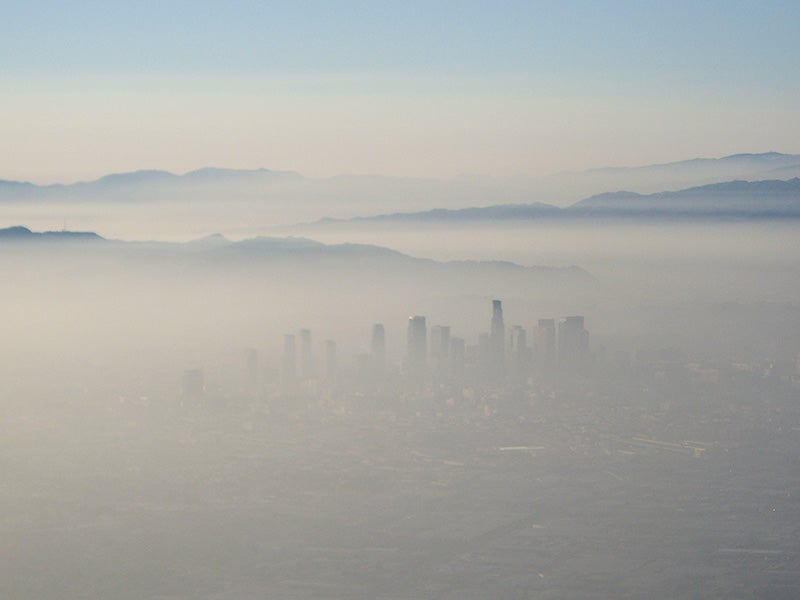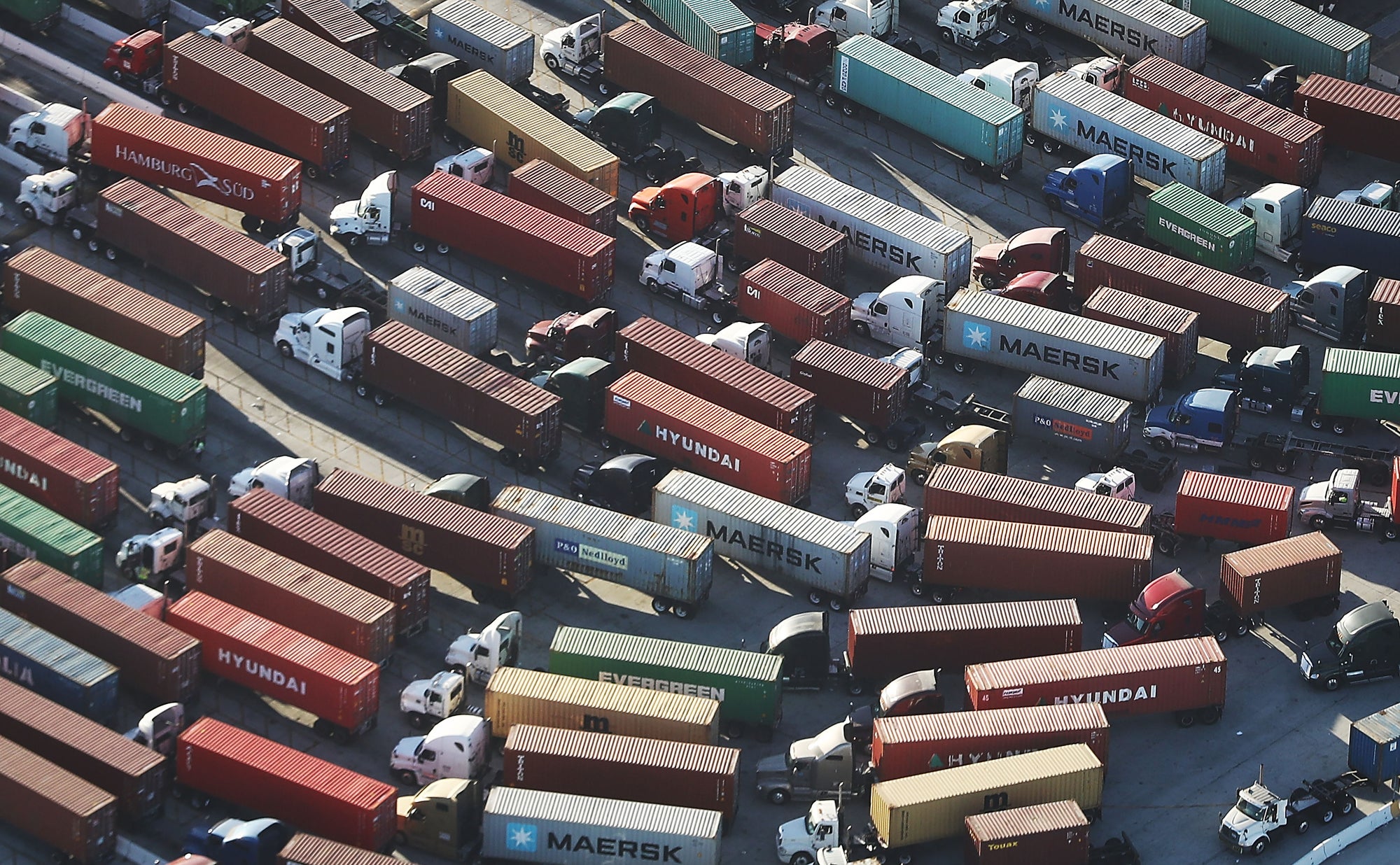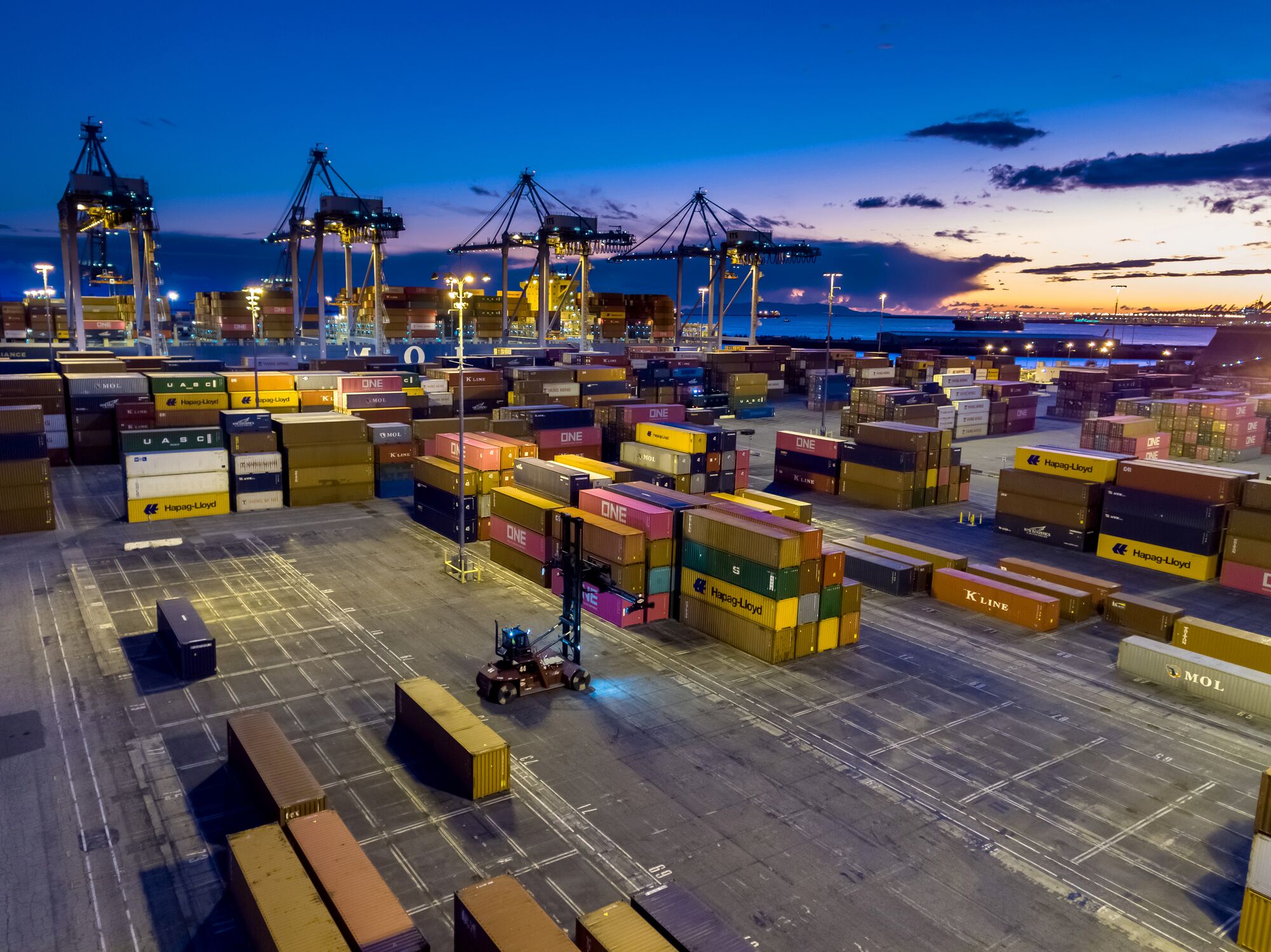No More Delays: Clean Up SoCal Port Pollution
It’s time for SoCal’s air regulators to build the political will and shape an Indirect Source Rule to shift port operations to zero emissions
Rules needed to protect the lives and health of millions of people living near the San Pedro Bay ports keep stalling out at Southern California’s air regulator. It’s not for lack of trying. Rules to address pollution magnets, such as port facilities, have been in the works for decades. It’s long past the time for the ports and the South Coast Air Quality Management District (AQMD) to stop debating whether life-saving rules are necessary. It’s time to put rulemaking into drive and prioritize public health over the profits of industrial polluters lobbying to stop progress.
The ports remain the largest fixed source of pollution fouling our region’s notoriously filthy air – air so bad that it regularly gets a failing grade from the American Lung Association’s annual report card. For twenty-plus years, the EPA has determined that the South Coast Air Basin has failed to meet federal standards for the reduction of ozone – a pollutant that weakens lung function, damages our airways, and leads to increased risk of death for Californians. And as most of the nation celebrated the summer holidays, the region exceeded federal ozone standards every single day of the month of July – a terrible trend that continued for most of the summer.

Smog covers the city of Los Angeles. Three million people in the greater Los Angeles area are living with asthma, diabetes, cardiovascular disease, and other smog-related diseases. (Jordan / CC BY-NC-ND 2.0)
The trucks, forklifts, and other equipment used in the ports typically run on diesel fuel, one of the dirtiest, most health-damaging fossil fuels known. While this pollution degrades Southern California’s air, fumes from port vehicles, equipment, and ships have transformed neighboring communities into “diesel death zones.” If you live in one of these neighborhoods adjacent to the ports, like West Long Beach, your life expectancy is projected to be eight years shorter than the life expectancy for the wider LA County area.
As the ports and AQMD prolong the process of adopting a comprehensive port rule, the region continues to fail in its attainment of federal ozone standards, with the prospect of federal sanctions in play that could cause serious economic damage in the region. There truly is no time to waste.
Technology exists to fix this, and AQMD has the regulatory authority to do so. They simply need the political will to ignore the excuses from polluters and their lobbyists and get it done.
The solution lies in what is known as the Indirect Source Rule, or ISR – a tool the AQMD has had at its disposal to address facilities that act like pollution magnets. Specifically, the Marine Port ISR, Proposed Rule 2304. An astounding ten years overdue, Rule 2304 would join existing ISRs covering other vital parts of the goods movement industry, such as railyards and warehouses.
What ISRs do – and what makes them such a vital tool – is that rather than dealing separately with each individual source of pollution, like trucks and locomotives, that operate within an extensive, complex facility like a port, they look at all the moving parts as a system and can chart a pathway to zero-emission operations. The result is a comprehensive, multifaceted strategy for tackling all sources of smog associated with massive complexes like SoCal’s ports. An ISR can connect the dots in a way that other types of pollution rules often fail to do.

Trucks haul shipping containers at the Port of Los Angeles, the nation’s busiest port. Their emissions create diesel death zones along freight lines and freeways throughout the state. Trucks produce the pollution for 40% of California’s unhealthy smog problem.
(Getty Images)
Shipping industry lobbyists have been waging war against the ISR concept and have convinced some port officials to join them. The reasons may seem obvious to communities being harmed—lobbyists put profit over the wellbeing of communities every time. While they haven’t succeeded in killing the proposal, they’ve managed to slow progress to the point where it could almost be measured in geologic time rather than months or years.
Enough. Southern California’s port traffic is growing rapidly and is projected to keep growing. Without a comprehensive approach like Proposed Rule 2304, port pollution will continue to worsen, damaging the health of millions and shifting billions in public health care costs while contributing more to global climate change.
Polluter lobbyists are fighting against the ISR because it may require long-overdue investments to phase out diesel equipment and replace it with zero-emissions alternatives. They complain about costs even as massive public investments pour in to help ports make this conversion. But they’re simply wrong when they claim that such requirements will harm our economy. This isn’t a zero-sum game: not only can we have cleaner air and economic growth, but Southern California’s economy will be stronger if we cut port pollution with Proposed Rule 2304.
Remember that the Port ISR can examine the ports’ operations, not just separate pieces like tugboats and forklifts. It can improve the ports’ operational efficiency via advanced scheduling and logistics to optimize the movement of ships, trucks, trains, tugs, and ferries – reducing idle times and moving goods more efficiently.
And a large amount of federal money is available to agencies like the port authorities and AQMD to clean up port operations by investing in electric infrastructure, community protections and zero emissions equipment. That’s money that will flow into Southern California’s economy and create local jobs.
There’s also the money our region would save in public health costs if more is done to curb emissions. The pollution spewed by these ports has been shown to worsen the risk of respiratory disease and increase medication use, doctor and emergency room visits, and hospital admissions. Inevitably, that means big healthcare costs and more missed work days thanks to those pollution-caused illnesses. None of this is exactly good for the local economy. Full implementation of the region’s air quality management plan, including measures like ISRs, has been estimated to save $134.3 billion in healthcare costs over the next 12 years.
If we’re going to talk about the economic impacts of an ISR rule, we must consider the likely federal sanctions, including loss of highway dollars, if Southern California continues to violate national pollution standards. Not only will that mean a direct loss of funds and the jobs they would create, but without that funding to update the region’s transportation infrastructure, the region will suffer from more traffic, slower travel, and lost time and money for workers and businesses.
There’s no serious doubt: Not cleaning up SoCal’s ports will ultimately cost far more than doing what’s right to protect people’s health.
In comments Earthjustice and our allies filed with the AQMD in May, we made several specific suggestions about how to make Proposed Rule 2304 as effective as possible. These included using the ISR to better coordinate local utilities, port authorities, terminal operators, and original equipment manufacturers to facilitate the transition to zero-emissions technologies; stronger, more aggressive emissions reduction targets for all types of vessels and equipment; and more accurate monitoring and reporting requirements so that we know what’s working and what isn’t.
We know from the AQMD’s working group sessions that technology is not the issue. We know how to do this. It’s time to put people ahead of profits and politics and get it done for our health and our lungs.
The California Regional Office fights for the rights of all to a healthy environment regardless of where in the state they live; we fight to protect the magnificent natural spaces and wildlife found in California; and we fight to transition California to a zero-emissions future where cars, trucks, buildings, and power plants run on clean energy, not fossil fuels.
